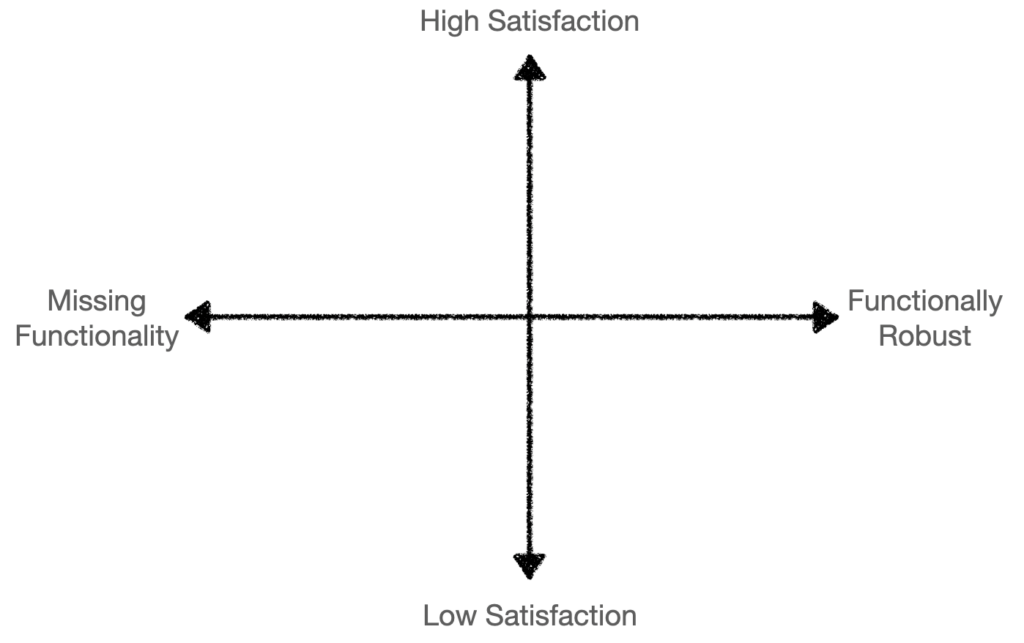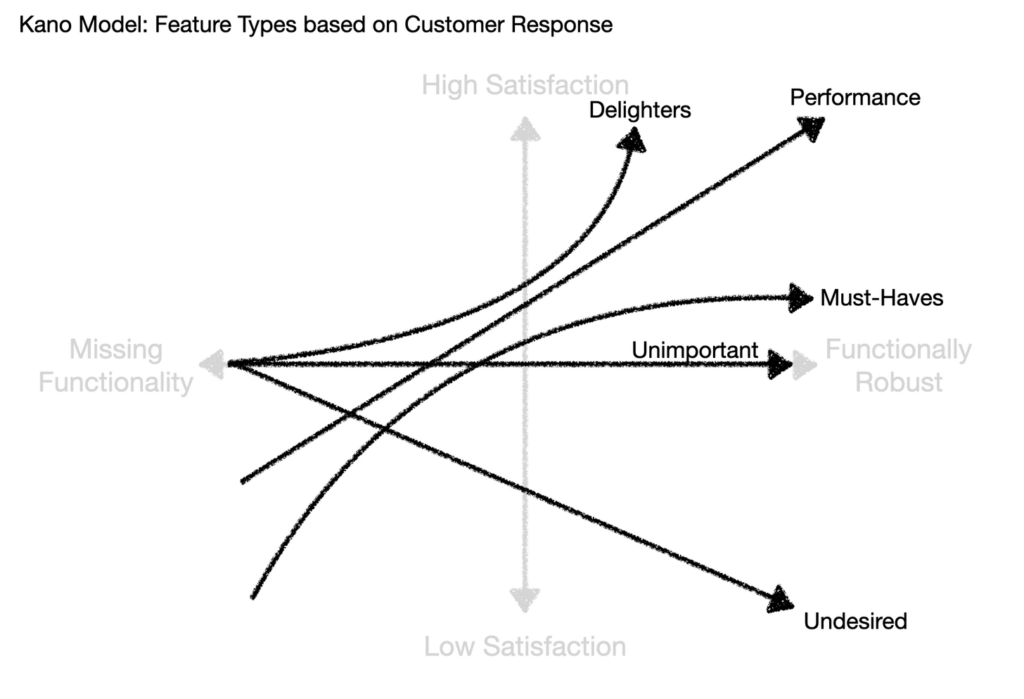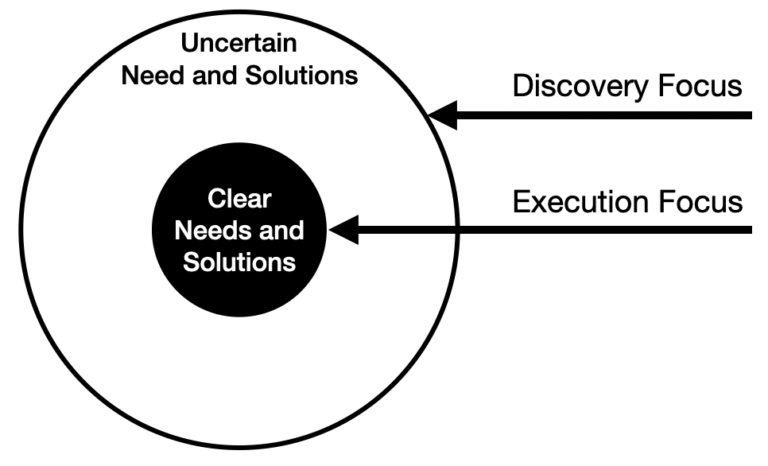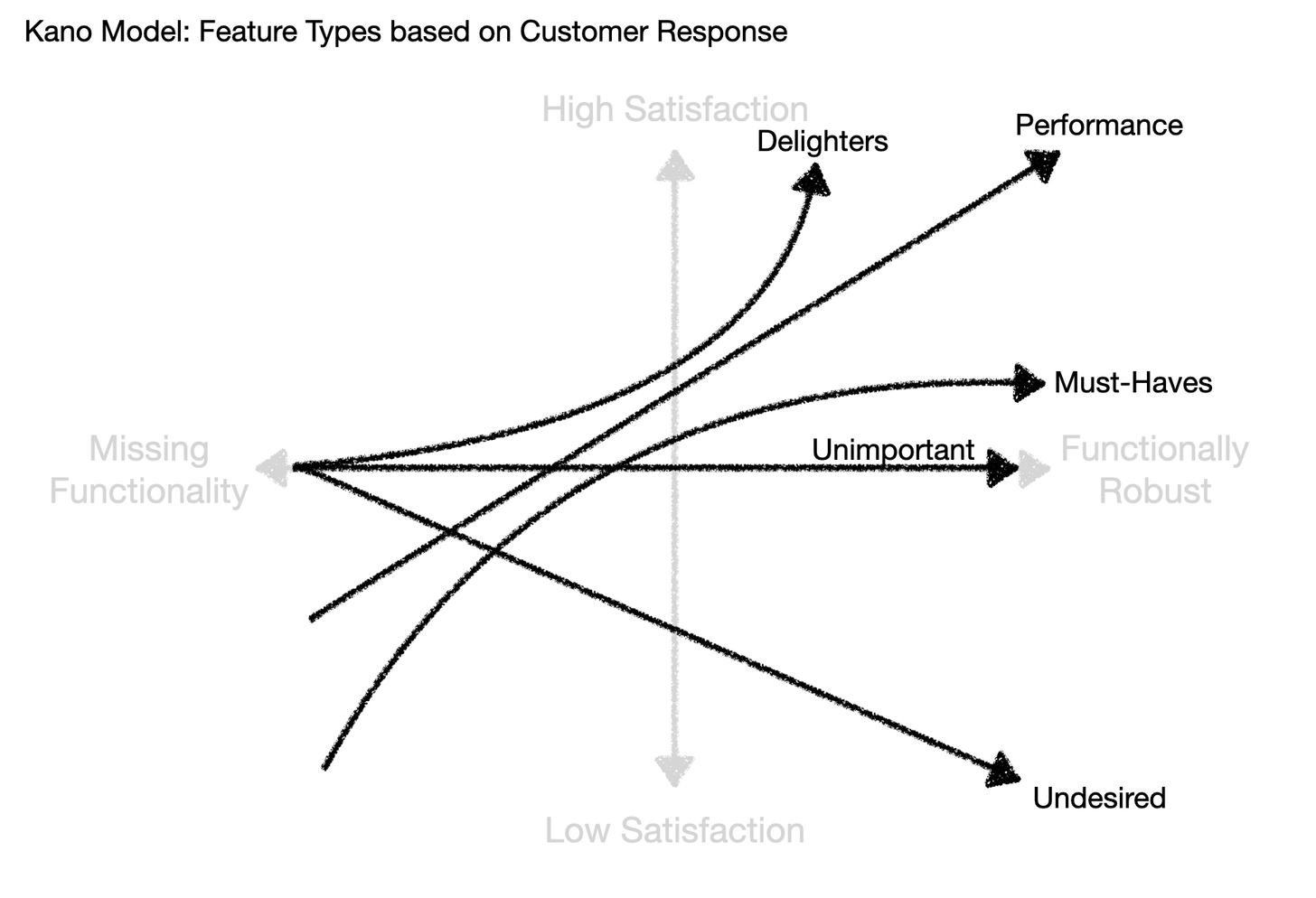The Kano Model is a popular tool for prioritizing your product backlog or simply sanity testing your alternative prioritization approach. In this edition, I am going to relate this great model with the concept of Product Execution versus Discovery focus that I described in a previous article.
What is the Kano Model?
The Kano Model is a method for understanding product or service quality from the perspective of the customer. It is one of the more popular tools that Product Managers use to assess priorities of various product investments.
In short, formally, the model compares customer satisfaction versus functionality as determined through interviews, surveys, and statistical analysis. In practice, many professionals that use Kano do so with less statistically sound techniques and still derive a great deal of value in assessing investment priorities.

? Two excellent articles on Kano are: Folding Burritos The Complete Guide to the Kano Model and UX Magazine’s Leveraging the Kano Model for Optimal Results.
Where Kano gets interesting is in the 5 categories of customer response to whether or not specific features would be present in your product. These five categories are the following:
-
Must-Haves – Features that customers expect in the product and will likely not buy without. You must invest in these features but there is limited value is continuing to invest beyond hitting some threshold. Example: Modern mobile phones require a good quality camera, but not everyone needs 30x optical zoom.
-
Performance – Features that need to be continuously invested in as making them better will always increase customer satisfaction. Example: Customers will continue to be more satisfied as electric vehicles increase their range on a single charge.
-
Delighters (aka Attractive) – A feature that is unexpected but increases customer satisfaction is said to delight. Products often include these are differentiators once must-haves are met. Example: Voice assistants can tell you jokes in addition to helping with mundane task automation.
-
Unimportant – Some features never move the needle on customer satisfaction and are not viewed as necessary. Example: Many built-in apps on iOS are not used by the vast majority of users, including Compass, Home, and Watch app. This are just ignored or organized out of sight by users.
-
Undesired – Some features can reduce the experience customer have and actually reduce the overall value delivered. Example: Google requiring new Gmail accounts (back in 2012) to register with Google+ to juice their user numbers despite many of these users having no interest in that functionality.

How does Kano fit with Execution versus Discovery?
Now with the very basics of Kano outlined, we have a question of how this fits in different new product scenarios. Below is the visualization of a Execution Focused new product versus a Discovery Focused new product.

To recap this concept, when developing new products we have choices we make within our product strategy. One of the levers we can manipulate is the degree to which we are navigating into uncertainty.
-
To the extent that we understand market needs and solution design, this is where our business must be execution focused. We must execute in developing and delivering solutions to market better than competitive alternatives.
-
To the extent that we have greater uncertainty about the needs and/or the solutions, we must focus on excellence in discovery. Often, this is green field discovery work that no obvious competitors own.
In truth there is a spectrum between what we know and what we need to discover. Sometimes, we will learn that what we thought we knew was naive, but we must start our work somewhere.
Aligning these two extremes with the 5 feature types as outlined by the Kano model gives us slightly more of a foundation to assess our plans with.
Must-Haves > Execution Focused
In order for market participants to view certain features as must-haves, they must understand the problem space well. Further, they probably operate in a space where there are clear competitors that have set expectations or other pressures that dictate must-haves.
Therefore, must-haves operate in the Execution Focused space. For all must-have features, the organization must work to execute on development and delivery efficiently without over-developing. Here it is critical to control the scope of what is being designed and built so that the team builds only what is really required to address customer expectations.
Working efficiently here, will enable allocating more capacity toward delighters and performance initiatives.
Delighters > Discovery Focus
By definition features built to delight the customer are unexpected. Unexpected features are unlikely to be offered by competitors or to have been addressed if developing home-grown solutions.
As such, Delighters will always fall in the Discovery Focus bucket. Product teams will need to allocate capacity both for problem discovery and for the solution discovery work that follows.
Delighters should generally be tackled only after Must-haves. Since the focus is on Discovery and not Execution, they makeup of a successful team to engage in this work may be different,
Performance > Discovery Focus
If it were easy to do you would have already done it. Whether it is delivering to your customers are a fraction of the cost, increasing scalability, or improving substantially on key business metrics, this type of focused work is critical to keep continuously investing in.
If you don’t keep investing in improve Performance, your customers will. Frequently, this work requires a combination of pure technical research to identify solution improvements along with business innovation to keep moving the product perception forward.
Unimportant & Undesired > Execution
Both Unimportant and Undesired Features should not be invested in. Most often the decision to not invest in such feature initiatives has to deal with a product manager being effective at saying “No” to work that is not part of a thoughtful strategy.
By preventing work on these types of features you will drive up customer satisfaction and reduce the opportunity cost over time such features create on the organization. To successfully say “No”, there needs to be solid product strategy that has been built and communication within the organization.
Conclusion
The Kano Model is a great tool for prioritization and it fits well with the Execution versus Discovery thinking approach to work. By combining the two mental models, it gives added perspective into both how to balance product initiatives and how the organization should be focused to be most effective.
If you are in an existing product category, you undoubtedly will encounter a larger list of product “Must-Haves”. Focus on Execution.
If you are in a new product category, you need to focus product energy around Discovery of problems and solutions. This is because both Delighters and Performance features are frequently novel or cutting edge advances designed to set your products apart.
As always, these extremes are not the way mosts products actually exist. So use this as a guide to determine where to invest and how.
Recommendations
-
Jared Spool on Using the Kano Model to Build Delightful UX by Jared Spool (@jmspool). Learn more about Kano and practical examples of it from this oldish talk from the Delight 2013 conference.
-
Lenny’s Newsletter by Lenny Rachitsky (@lennysan). Normally, my recommendations tend toward B2B. Lenny is definitely more B2C slant
